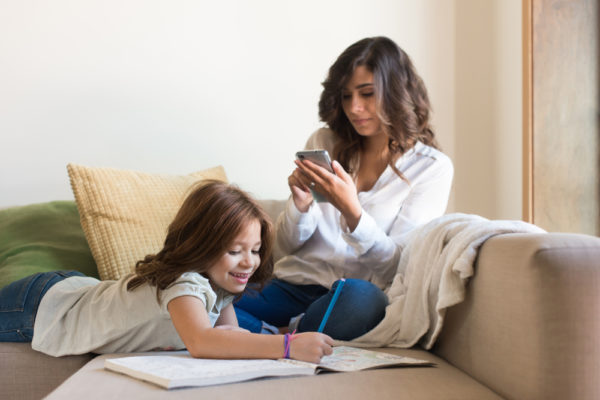The trick to getting more parents involved in what’s going on in the classroom: stick to video, social media, and other familiar tech
Teachers have become pretty adept at doing more with less, but in our efforts to offset funding cuts, we often overlook a very important, and inexpensive, resource: parents. In fact, parents can make such a big impact that researchers have found [1] that schools would need to increase per-pupil spending by more than $1,000 in order to achieve the same results gained by parental involvement.
The National Association for the Education of Young Children’s research on Family Engagement and Early Childhood Education notes that:
“When children’s progress can be tied to classroom activities and home activities, development and learning are strongly reinforced and further family involvement is inspired. Discussing changes in a child’s readiness skills can open a dialogue about the child’s strengths and any areas of potential concern for families or teachers. Then families and teachers can work in partnership to ensure that children continue to receive appropriate instruction and related experiences to further their development.”
I am fortunate to have very involved parents in my classroom this year, but for many teachers, that isn’t the case. This is not a shaming of parents. For working parents, reading a weekly newsletter and reviewing homework is just one more thing in an already jam-packed schedule—multiplied by each child in the family. I get it. It’s exhausting.
Even if parents can and want to be involved, there are other barriers, like the fact that classrooms and teaching may no longer resemble what parents remember. Experiential learning, flipped classrooms, and new standards have turned the familiar to foreign, and this can be intimidating. So how can we bring them back, and get them engaged with their kids’ learning? The same way we engage their kids — with technology!
Today, More than 90 percent of families own a mobile device [2], and nine in ten (94 percent) families [3] have some kind of internet access, even among families below the poverty level. And we know that regular updates on children’s growth can encourage families to engage in more learning-related activities at home. Leveraging the technology they are already using can be a powerful strategy to re-ignite parental involvement.
Here are some tips and inspiration to encourage greater parent engagement:
Social media
Three-quarters of online parents use Facebook, so creating a Facebook Group can be a good way to communicate with parents and share information, post student work, and add classroom photos and videos. However, because there have been privacy and legal concerns with teachers posting to the popular social media platform in the past, some districts and schools prefer that their teachers shy away from using Facebook. A great alternative is Shutterfly—the Share Sites offer a great way to quickly share compelling classroom visuals with parents, but in a way that is much more private. And unlike a newsletter, the students love sharing these visuals with their parents, pointing out friends and interesting classroom elements that paint a better picture of what the students’ daily experience looks like, so the conversations happening between parent and child are often much more rich than what follows “What did you do at school today?”
Digital portfolios
We use SeeSaw [4], but there are plenty of other options in this space. A digital portfolio platform that allows me to post student work and other learning artifacts, so that parents can see exactly what their student is doing in the classroom. And students and parents can upload content from home through the app, which is oftentimes more efficient than signing off on a form that they reviewed their student’s homework.
Blogs
Parents are spending nearly 3 hours a day scanning the internet [5]—in line at the grocery store, waiting for soccer practice to end, etc. Make it easier by providing classroom updates digitally by creating a blog. Think keeping up a regular posting calendar seems daunting? Give students some ownership and let them take turns creating posts about what’s happening in the classroom.
(Truly) Compelling learning content
Most content created for young learners isn’t meant for parents, so (shockingly!) they aren’t always pumped to watch and learn alongside their kids. There are exceptions, though. My students and parents love StoryBots [6], which are short, funny educational videos and interactive learning games (bonus: it’s free!).
Translation services for ESL students
Communicating with ESL parents can be very challenging. And because young children can, at times, be unreliable narrators, it is best not to use them as translators when trying to communicate with their parents. I find that many of the visual strategies outlined above work well to show student work and communicate classroom activities, even with a language barrier. But services like Google Translate and TalkingPoints [7] allow teachers to communicate in the parents’ native tongue, which is critical when articulating challenges and opportunities for growth.
